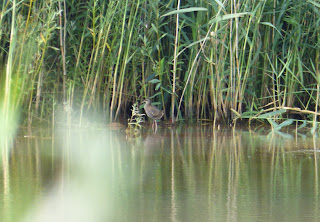Little Ringed Plover
Lapwing on Pophills
Young Roe Deer
Green Sandpipers
Green Sandpiper
First Tufted brood
Gulls on main pit
Off to the pits
Linnets
Painted Lady
Brimstone
Another weekend of patch plodding with limited variation for myself and Jon. The highlight of the weekend was confirmation of successful breeding for our Little Ringed Plovers again. The area in which they have bred will hopefully remain after the restoration and will continue in the Autumn giving us future hope.
There were plenty of gulls around on Sunday as they were feeding on the local ploughed fields, nothing other than Black-heads and Herrings though. The first Teal returned on Pophills but sadly no Garganey which was present this time last year. The reed lagoon’s exposed mud attracted the most interest with eight Green Sandpipers (one behaving differently & a slightly longer beak), three showing Water Rails and a Little Ringed Plover. The Shelduck ducklings were still hiding under cover of the reeds but could be heard.
The Lapwings seem to be edging back week by week and we counted 55 on Sunday above the main pit whilst six Common Sandpipers were present around the site. Mike Inskip reported a Little Egret midweek but there was no sign on Saturday or Sunday.
Best of the butterflies seen were three Painted Ladies and a Brimstone.





















































